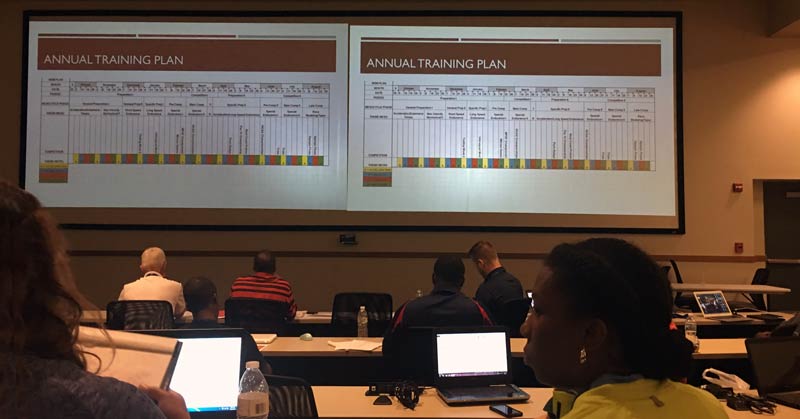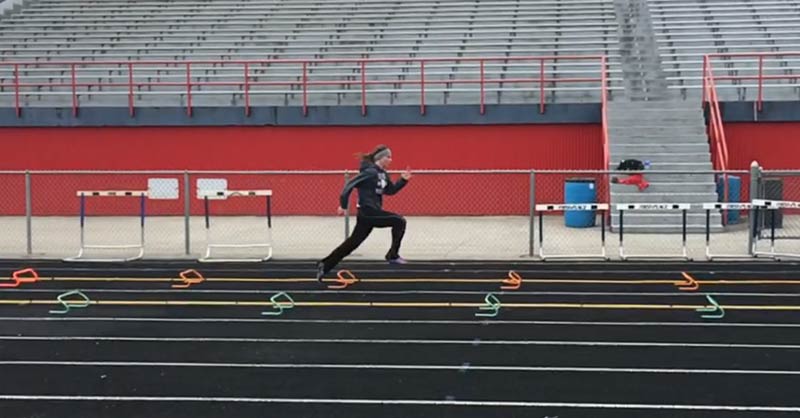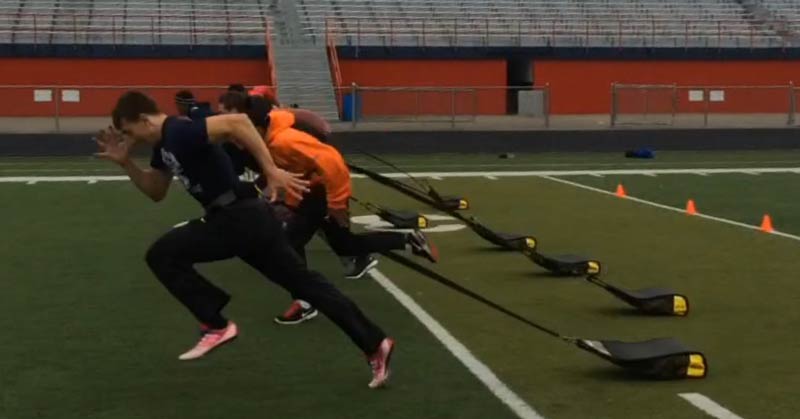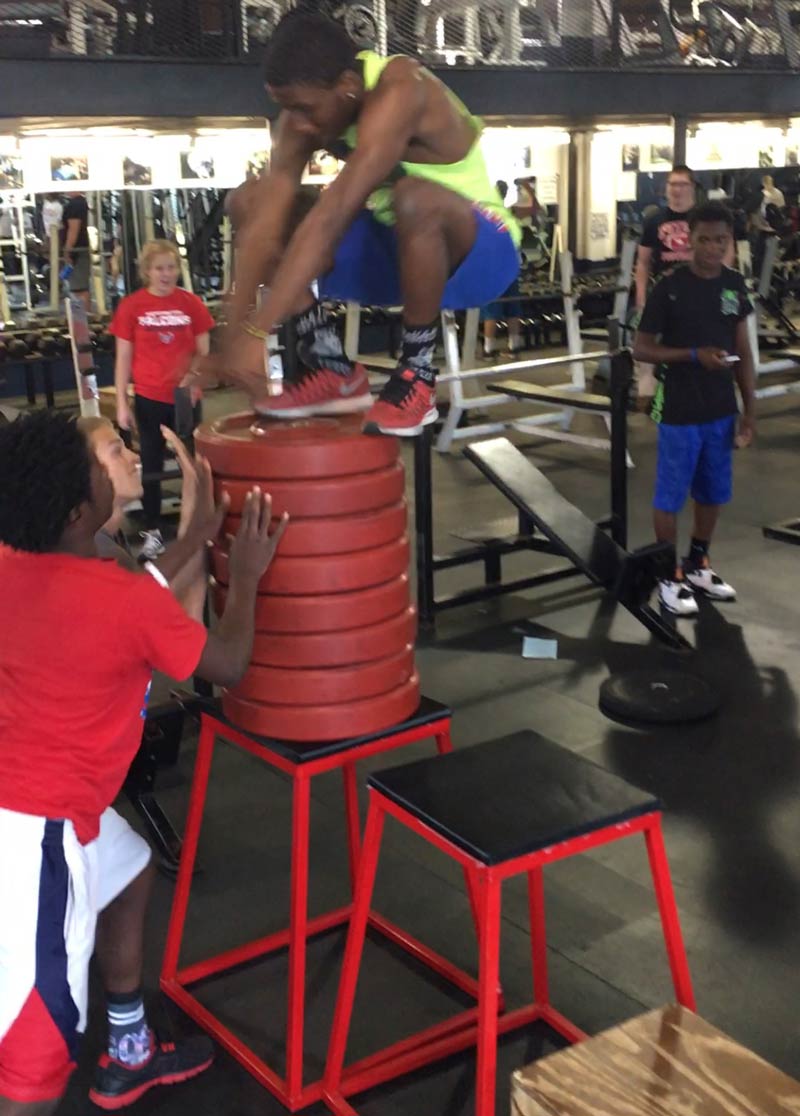
There are infinite ways to improve as a coach. However, there are a few in particular that helped me progress from a young and inexperienced coach who relied heavily on having talented athletes in order to be successful, to the coach I am today, possessing the base knowledge needed to properly develop my athletes. The two things that helped me improve the most were continuing education and the implementation of training aids into my practice sessions.
Continuing Education
Opportunities to become more knowledgeable on virtually any topic are literally right at your fingertips. From the click of a mouse to scrolling through the social media feed on your mobile device, information is available to you in a matter of seconds. Continuing education is a must-have. If you want your athletes to respect your knowledge and believe in your approach, it’s imperative to seek out opportunities to become more educated on the latest trends. Successful coaches know that taking the same approach to training year after year has become a thing of the past, as sport-specific training methods are improving rapidly and the “how to’s” are there for the taking.

Whether you are able to set aside some time to attend on-site training such as camps and clinics or to access instructional videos and articles from your home computer, becoming a more knowledgeable coach is crucial for the proper development of the athletes you work with.
There are companies and organizations all over the United States that offer continuing education, and I am personally a big supporter of taking advantage of them. While most of us find it hard to set aside a whole week, or even a just weekend, at any time during the year to attend on-site training courses, if the timing is right and you’re able to make it, I highly recommend jumping on the opportunity.
Coaches should take continuing ed courses to stay updated on the latest trends, training methods. Share on XMy first exposure to continuing education was simply attending a camp that some of my athletes had signed up for during my first year of coaching. I brought a notepad and stayed off to the side, just observing and taking notes. It was an eye-opener for me to see knowledgeable and experienced coaches teaching specific drills and progressions. From that point on, I was hooked.
Blogs are another great source of information. There are many different sites out there; you’re bound to find one that fits your wants and needs. It can be very beneficial to have access to constantly updated information that often comes from coaches who are in a similar position as you.
Training Aids
As a coach, I believe that it is our responsibility to ensure that our athletes are engaged in our training sessions. Therefore, we have to grab their attention to get them to focus on the task at hand. Just like students in a classroom, athletes will mentally check out as soon as instruction becomes monotonous and boring. A great way to keep things interesting is to implement training aids into your practice plans. They also add to the overall effectiveness of the training. There must be 1,001 different tools you can get your hands on to benefit your overall program, but there are a few in particular that are at the top of my list. Some are cost-effective and don’t place much of a dent in your budget, while others may take some time and effort to raise funds for in order to purchase.

Mini hurdles (some people like to call them “banana steps”) are a must-have for my practices. We use them on a weekly basis for a variety of different drills, but most specifically for the “Wicket Drill” or Max Velocity Drill. Over the years of training, I’ve found that these aids are one of the most effective ways to develop proper maximum velocity mechanics. There are articles posted online that show how to build your own mini hurdles, making them extremely cost-effective and definitely worth looking into.
Using mini hurdles is one of the most effective ways to develop proper maximum velocity mechanics. Share on X
Sometimes the appeal of certain types of equipment to our athletes can be enough to make using them worthwhile. For instance, young athletes love speed sleds. They see online videos of them being used and think they’re the best thing in the world. I’m not a huge believer in heavily weighted resistance when training speed, but if used properly, it can be beneficial. Perhaps most importantly, the athletes buy in and get excited to use them. When using weighted sleds of any type when training for speed, my general rule of thumb is to ensure that the resistance is light enough for the athletes to still be able to achieve the proper positioning and body angles during acceleration. (I only use speed sleds for distances up to 30m.)

I also use plyo boxes. Athletes love to compete with one another to see who can achieve the highest standing box jump, and they also look forward to the variety of other plyometric drills we do with them. Foam rollers and lacrosse balls help reduce soreness and speed up recovery. These are items I’ve seen some coaches require their athletes to purchase and bring with them daily. Medicine balls are another useful tool. They have many uses, ranging from a focus on core to plyometrics, and even acceleration.
Choose the Coaching Tools That Suit Your Needs
All in all, these were just a few examples of coaching tools that have helped me. Everyone’s situation is different, so what works for me may not work for you, and vice versa. If you’re one of the many coaches out there looking for ways to better yourself, better your program, and help your athletes succeed, I hope these recommendations help. The opportunities are endless.
Since you’re here…
…we have a small favor to ask. More people are reading SimpliFaster than ever, and each week we bring you compelling content from coaches, sport scientists, and physiotherapists who are devoted to building better athletes. Please take a moment to share the articles on social media, engage the authors with questions and comments below, and link to articles when appropriate if you have a blog or participate on forums of related topics. — SF

